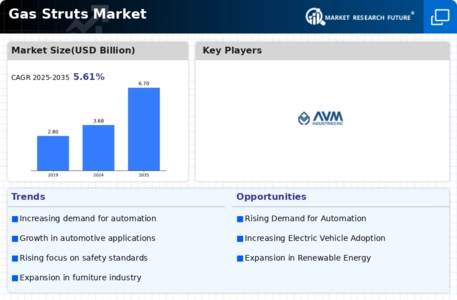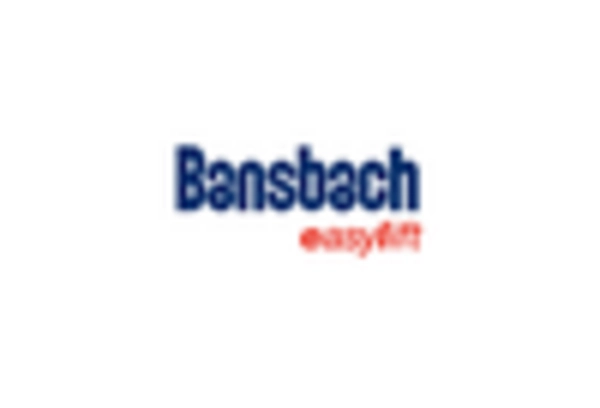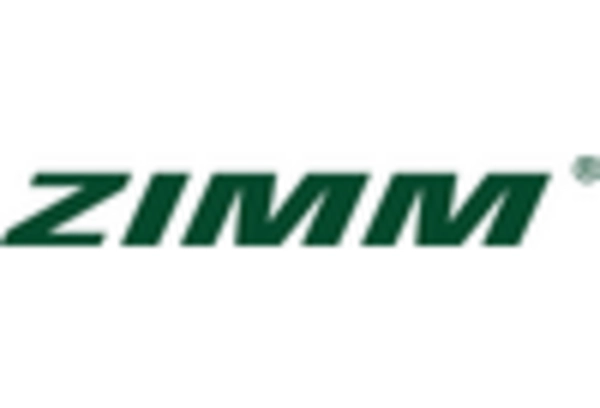Increasing Demand in Automotive Sector
The automotive sector plays a pivotal role in driving the Gas Struts Market. As vehicle manufacturers increasingly incorporate gas struts for hoods, trunks, and tailgates, the demand for these components is expected to rise. In 2025, the automotive industry is projected to witness a growth rate of approximately 4.5%, which could translate into a significant increase in gas strut applications. This trend is further fueled by the growing consumer preference for enhanced vehicle functionality and safety features. Consequently, the Gas Struts Market is likely to benefit from this upward trajectory, as manufacturers seek to innovate and improve their product offerings to meet evolving consumer expectations.
Expansion in Furniture and Home Appliances
The furniture and home appliance sectors are emerging as key contributors to the Gas Struts Market. With a rising trend towards modern and multifunctional furniture, gas struts are increasingly utilized in items such as adjustable tables, cabinets, and storage solutions. The market for home appliances is also expanding, with gas struts being integrated into products like washing machines and refrigerators for improved usability. In 2025, the furniture market is anticipated to grow by around 5%, indicating a robust demand for gas struts in these applications. This expansion suggests that the Gas Struts Market will continue to evolve, driven by consumer preferences for convenience and innovative designs.
Rising Focus on Ergonomics and User Comfort
The increasing emphasis on ergonomics and user comfort across various industries is likely to bolster the Gas Struts Market. As companies prioritize the well-being of their employees and customers, gas struts are being integrated into workstations, office furniture, and medical equipment to facilitate ease of use and adjustability. This trend aligns with the growing awareness of workplace ergonomics, which is expected to drive a market growth rate of approximately 4% in related sectors by 2025. Consequently, the Gas Struts Market may experience a surge in demand as manufacturers respond to the need for ergonomic solutions that enhance user experience.
Growth in Aerospace and Defense Applications
The aerospace and defense sectors are becoming increasingly reliant on gas struts, which are essential for various applications, including cargo doors, hatches, and cockpit equipment. The Gas Struts Market is projected to grow at a rate of 3.5% in 2025, which may lead to heightened demand for gas struts in aircraft manufacturing and maintenance. Additionally, defense contracts often require specialized gas strut solutions, further propelling the Gas Struts Market. This growth indicates a potential for innovation and customization within the industry, as manufacturers strive to meet the stringent requirements of aerospace and defense applications.
Technological Innovations in Manufacturing Processes
Technological advancements in manufacturing processes are poised to transform the Gas Struts Market. Innovations such as automation, precision engineering, and advanced materials are enhancing the production efficiency and quality of gas struts. As manufacturers adopt these technologies, they can produce more reliable and durable products, which may lead to increased market penetration. The manufacturing sector is expected to grow by around 3% in 2025, suggesting that the Gas Struts Market will benefit from improved production capabilities. This evolution indicates a potential for competitive differentiation among manufacturers, as they leverage technology to meet the demands of diverse applications.


















Leave a Comment